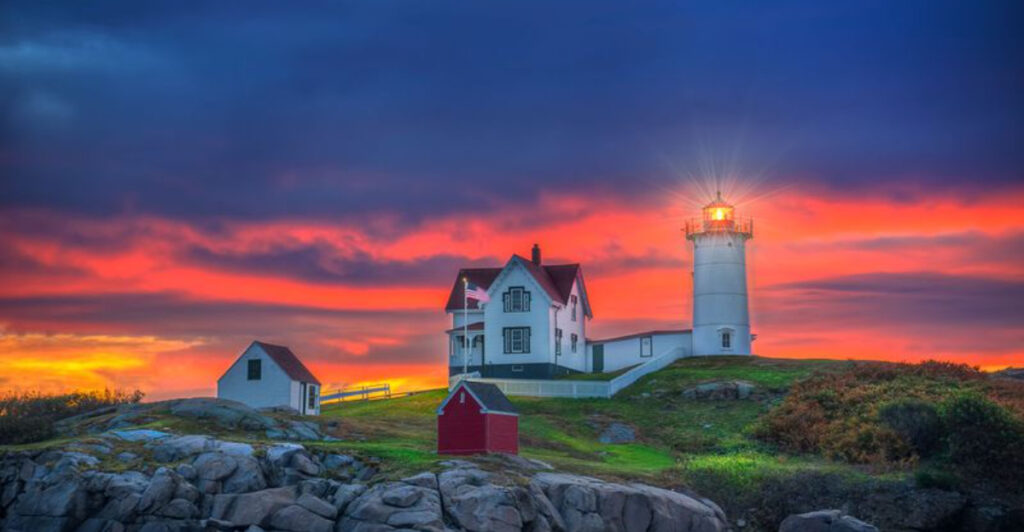Maine’s rugged coastline holds some of America’s most breathtaking lighthouses, each offering unique photography opportunities. From dramatic cliff-top sentinels to candy-striped beacons, these coastal guardians have guided sailors for centuries while captivating photographers today. Whether you’re chasing golden hour magic or stormy weather drama, Maine’s lighthouses provide endless inspiration for your camera.
1. Portland Head Light (Cape Elizabeth)
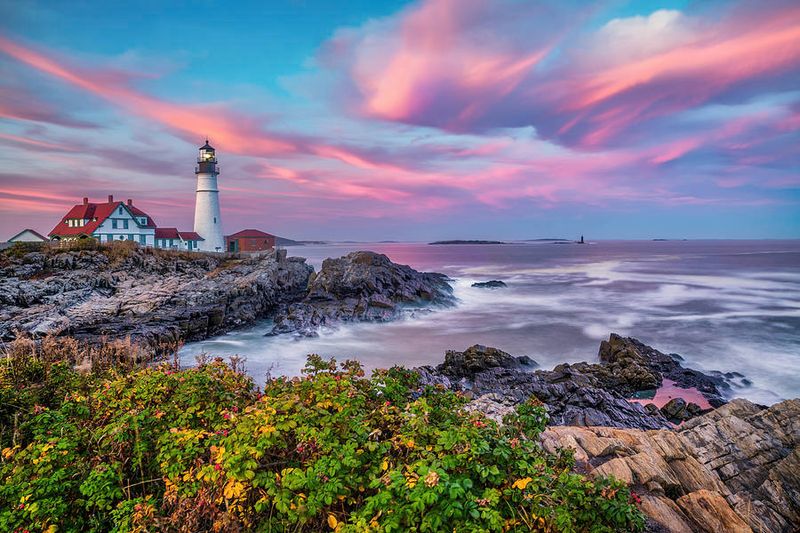
Standing tall since George Washington commissioned it in 1791, this iconic beacon claims the title of Maine’s oldest lighthouse. Rocky shorelines and crashing waves create the perfect dramatic backdrop for your shots.
Fort Williams Park provides multiple vantage points, from clifftop walking paths to wave-swept rocks below. Sunrise photography here transforms ordinary moments into extraordinary memories, especially when morning fog rolls across the scene.
Professional photographers frequently choose this location for good reason – the combination of historic architecture and natural drama rarely disappoints.
2. Bass Harbor Head Light (Acadia National Park)
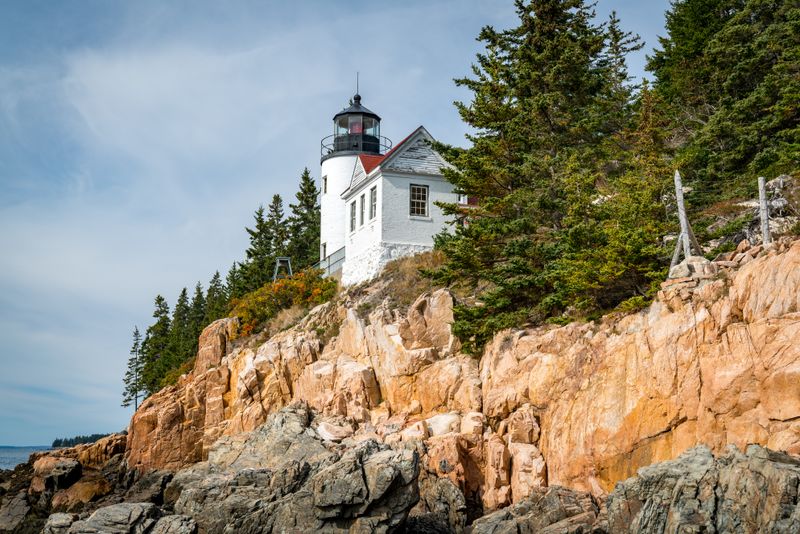
Perched dramatically on Mount Desert Island’s cliffs, this lighthouse offers some of Maine’s most spectacular sunset photography. The red beacon light casting against darkening skies creates pure magic for evening shooters.
Two distinct photo opportunities await: the popular cliffside viewing area for classic sunset compositions, or adventurous photographers can scramble down to the rocks for unique low-angle perspectives. Tremont’s location within Acadia National Park means crowds gather quickly.
Smart photographers arrive early to secure prime positions, as this spot consistently ranks among Acadia’s most photographed locations.
3. Pemaquid Point Light (Bristol)
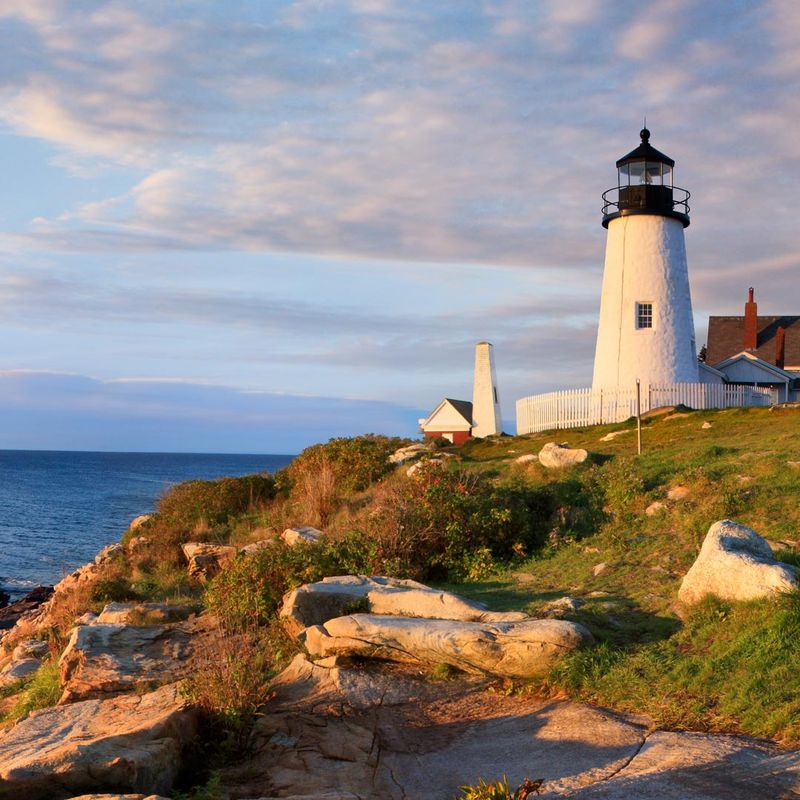
Featured prominently on Maine’s state quarter, this lighthouse sits atop some of the most photogenic rock formations along the entire coast. Jagged, sloping granite ledges create natural leading lines toward the classic white tower.
Wave action here provides endless variety – from gentle lapping during calm conditions to explosive crashes during storms. The nearby Fisherman’s Museum offers alternative shooting angles and historical context.
Seasonal tower climbing opportunities reward adventurous visitors with bird’s-eye perspectives impossible to achieve from ground level, making this location incredibly versatile for creative compositions.
4. West Quoddy Head Light (Lubec)
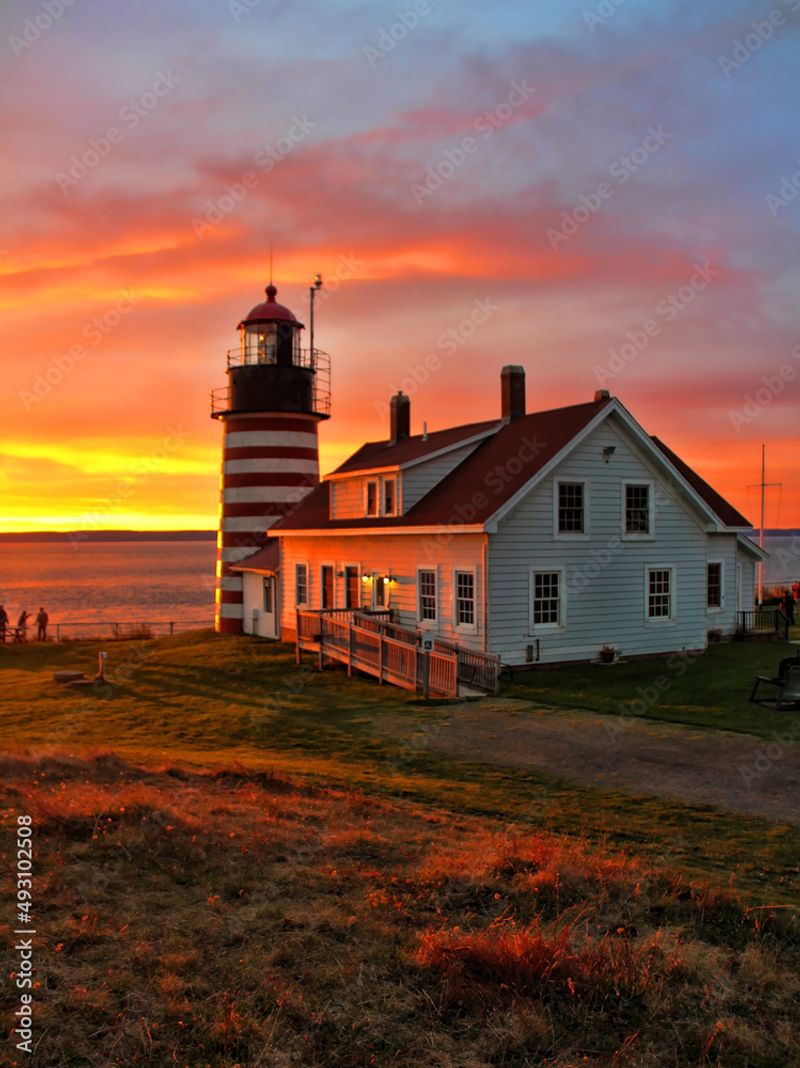
America’s easternmost lighthouse sports distinctive red and white candy stripes that photograph beautifully against coastal Maine’s rugged landscape. Quoddy Head State Park’s boardwalk trail provides comfortable access to prime shooting positions.
Geography enthusiasts appreciate capturing sunrise shots with Canada visible across the Bay of Fundy. Clear summer and early fall days offer the best visibility for these international landscape compositions.
The unique striped pattern makes this lighthouse instantly recognizable in photographs, while the remote Lubec location ensures fewer crowds than more accessible southern Maine lighthouses.
5. Marshall Point Light (Port Clyde)
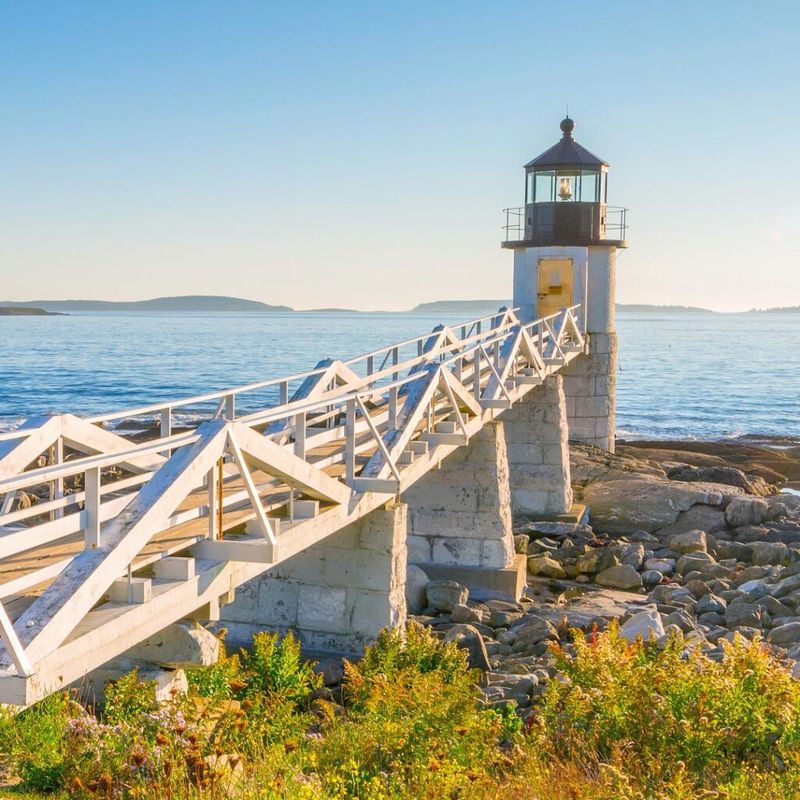
Hollywood fame came to this charming lighthouse when Forrest Gump ran along its iconic wooden walkway. The long boardwalk creates perfect leading lines toward the white beacon, embodying classic New England coastal charm.
Low tide conditions reveal stunning reflection opportunities in the surrounding tidal pools and calm waters. Port Clyde’s working harbor atmosphere adds authentic maritime character to wider compositions.
Beyond photography, this location serves as the departure point for Monhegan Island ferries, making it convenient for extended coastal photography adventures along Maine’s scenic mid-coast region.
6. Owls Head Light (Owls Head)
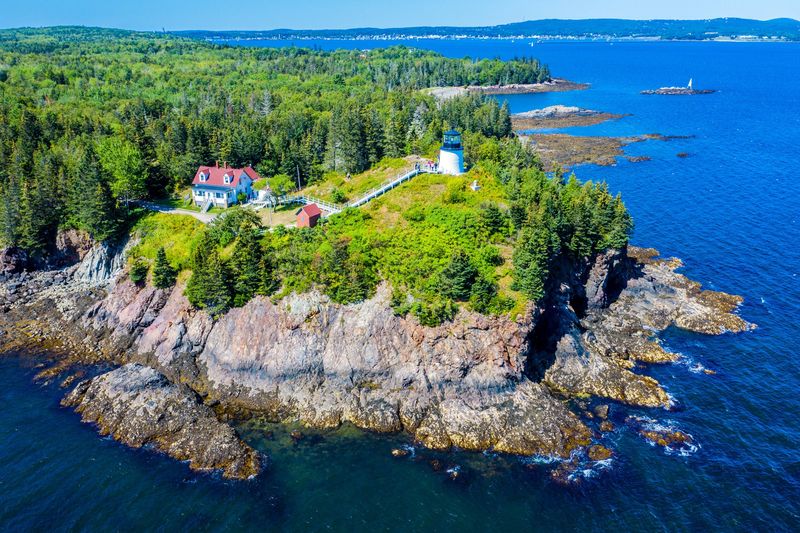
A scenic woodland walk through Owls Head State Park leads to this intimate lighthouse setting surrounded by towering pine trees. The original Fresnel lens still operates, adding historical authenticity to contemporary photographs.
Panoramic ocean views reward visitors who make the short hike, while foggy conditions transform the scene into something mysteriously atmospheric. The lighthouse’s modest scale creates opportunities for more personal, less imposing compositions.
Pine forest framing provides natural borders for creative shots, while the elevated position offers sweeping coastal vistas that extend far beyond the immediate lighthouse structure.
7. Nubble Light (Cape Neddick)
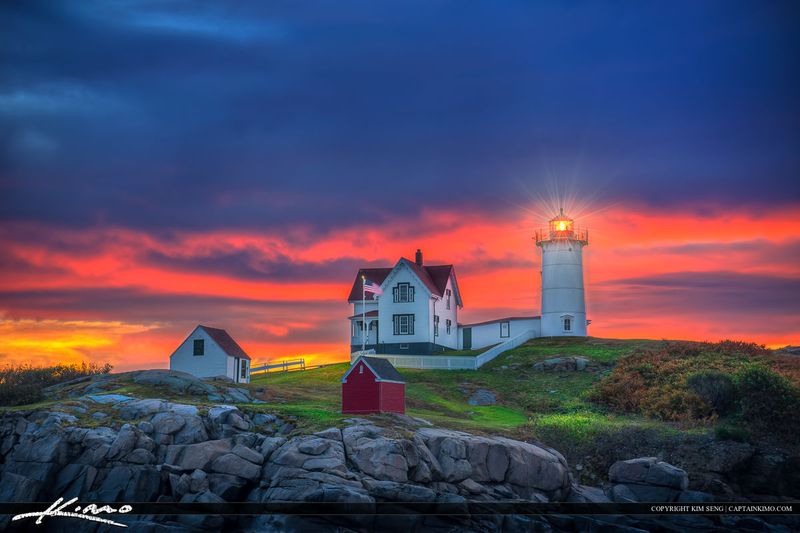
NASA included this lighthouse’s photograph on Voyager’s Golden Record, representing Earth to potential extraterrestrial civilizations. Positioned on a small offshore island, the lighthouse creates perfect postcard compositions from Sohier Park’s viewing area.
Golden hour photography here consistently produces stunning results, while Christmas decorations transform winter visits into festive wonderlands. Zoom lenses allow tight compositions that eliminate distracting foreground elements.
York’s location makes this easily accessible for photographers traveling Interstate 95, while the park’s facilities provide comfortable conditions for extended shooting sessions during optimal lighting conditions.
8. Rockland Breakwater Light (Rockland)

Nearly a mile-long granite breakwater creates one of Maine’s most unique lighthouse approaches, forming dramatic leading lines in photographs. Sturdy footwear becomes essential for safely navigating the potentially slippery stone walkway.
Sunset photography from the breakwater produces spectacular results, especially when stormy skies add natural drama to compositions. Drone photography opportunities exist where regulations permit, offering aerial perspectives impossible from ground level.
The extended walk filters out casual visitors, meaning dedicated photographers often enjoy relatively uncrowded conditions at the lighthouse itself, despite Rockland’s busy harbor location.
9. Seguin Island Light (Near Bath)
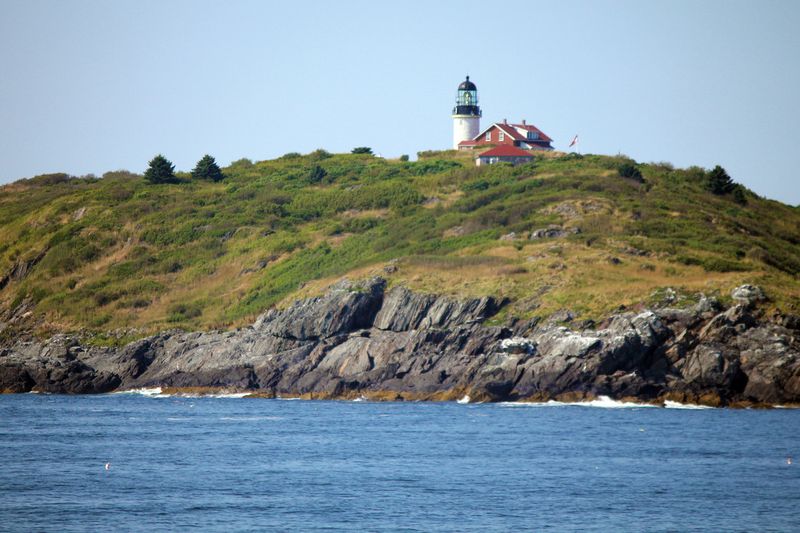
Maine’s tallest lighthouse stands majestically on an isolated island accessible only by seasonal ferry service from Popham Beach. This remoteness guarantees pristine, crowd-free photography conditions for those willing to make the journey.
Ferry approaches provide unique water-level perspectives of the towering structure, while the island’s cliffs offer dramatic elevated shooting positions. Sweeping ocean views extend endlessly in all directions from this offshore location.
June through September ferry schedules limit access but ensure optimal weather conditions for photography, making advance planning essential for capturing this magnificent lighthouse.
10. Spring Point Ledge Light (South Portland)

This unique caisson-style lighthouse offers something completely different from Maine’s typical tower designs. Portland’s city skyline provides a striking urban backdrop that contrasts beautifully with the maritime structure.
Southern Maine Community College campus provides easy access, while nearby Willard Beach offers alternative shooting angles. Sunrise photography works particularly well here, with early morning light illuminating both lighthouse and city.
Long-exposure techniques capture smooth water movement around the lighthouse’s base, while the breakwater connection creates interesting compositional opportunities. Bug Light Park nearby doubles your lighthouse photography options in one convenient location.

